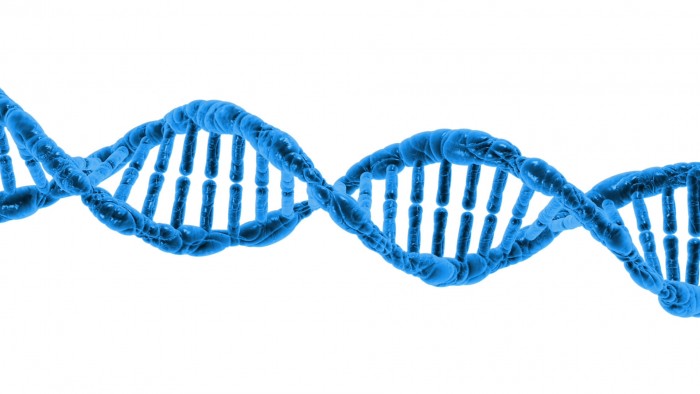One of the main challenges associated with conveying findings from behavioural genetic research concerns the relationship between aetiology and intervention. In part, this is because of the widely-held understanding among the lay public that something being “in your genes” means that your fate is sealed. But this challenge is more than just one of addressing misconceptions. Understanding the relationship between the aetiology of a disorder and the design, implementation, and potential efficacy of interventions that target it is a hard problem – and one that must be continuously re-examined to ensure that aetiological research contributes meaningfully to the ultimate goal of improving people’s lives.
“Can you speculate on the clinical implications of your work?”
I’m sure I’m not alone in having seen the colour drain from the face of many a junior scientist when, having felt the relief of concluding a talk about their work moments earlier, this live-hand-grenade-of-a-question is tossed their way from the back of the room, by a senior academic who had appeared, only seconds previously, to all intents and purposes, to be soundly asleep.
But why the anxiety? Most, if not all of the researchers I know, care deeply about the disorder or process they study and its impact on people’s lives. Certainly, all would be smart enough to recognise if their time and effort were being wasted, and sensitive enough to their own academic (and actual) mortality to change direction if so.
Genes means…?
In studying the aetiology of complex human traits and disorders, as many of my direct colleagues do, I think this question of implications is a genuinely tricky one. This is particularly true with regards to questions of prevention and intervention. I’m not going to go into the dramatic, though clearly very real, ethical questions around applications of emerging techniques such as gene editing here – but it is certainly the case that such issues influence the backdrop against which more prosaic discussions about the relationship between aetiology and intervention play out.
In particular, the phrase ‘genetic determinism’ looms large here, and captures something of the lay understanding of the nature of genetic influence. Essentially, this is the notion that something genetic equals something immutable, ‘set in stone’ – and crucially, beyond the reach of interventions. It’s clear to me that, even without the much-feared ethical dilemmas about the future possibilities of ‘designer babies’, holding this idea about the nature of genetic influence could make one uncomfortable about the potential implications of work designed to uncover it. Our world is one dictated by the prioritisation of resources and, if something (and for something read: schizophrenia, autism, depression…) is inevitable whatever we do, why not focus our efforts elsewhere?
(Incidentally – and to borrow my friend Joni’s lofty equine companion / convenient rhetorical device for a moment – it does always surprise me that the extreme rejection of this argument about the implications of a genetic determinism (in which few actually believe, in any case) is, essentially, environmental determinism (yes, I’m referring to Oliver James again). If you find a world of abandoned lost-cause diseases and designer babies dystopian and awful, why would you create an (equally fictitious) one in which everyone is to blame for everything?)
Complexity is complex
Aside from the need to better communicate that the evidence is overwhelmingly supportive of a model of genetic (and environmental) probabilism rather than determinism1, I think a bigger issue here is that the aetiology of these complex traits and disorders is just that: complex. As a result, parsing findings from aetiological studies in terms of the potential for interventions is not as straightforward as seeing the non-genetic portion of variance as the only viable target.
“There is a need to delve deeper; to clarify the mechanisms and systems of reciprocal effects that produce these top-level aetiological findings”
I recently read two papers that dealt with the question of the association between aetiology and intervention, as relating specifically to behavioural genetics, from complementary perspectives. In the first, a recent paper for the journal Prevention Science, Leslie Leve and colleagues discuss ‘Naturalistic Experimental Designs as Tools for Understanding the Role of Genes and Environment in Prevention Research’2. This paper nicely illustrates the potential of adoption, sibling, and novel IVF designs to unpick gene-environment interaction and correlation in ways that can meaningfully inform prevention research.
The second paper, published by George Howe and colleagues in 2002, is a forensic exploration of these issues that considers the inverse question: whether prevention trials can be used to test theories of aetiology3. In it, the authors consider general principles of the relationship between aetiology and prevention/intervention, citing specific examples around depression. I am obviously biased by my own research interests, but I find this area a particularly fascinating example of the intricacies of the relationship between a disorder’s aetiology and its treatability. Take the following findings:
- Parental depression history is a key risk factor for adolescents developing the disorder 4–6
- Depression is heritable in both adolescence and adulthood 7,8
- Genetic influences on depression (and many other psychiatric traits) seem to be stable across development9 and into adulthood 10
Yet, the best available evidence seems to indicate that the genes influencing parental and offspring depression are predominantly not the same ones – implying that the association between them is environmentally- (or, at least, socially)-mediated 11–13. What to make of this, from the perspective of seeking to design interventions for depression? Does an intervention that successfully targets parental depression necessarily reduce risk for offspring? Should gene-finding studies – whose ultimate goal is typically to identify biological pathways to disorders to inform treatment and prevention – stratify by age to account for phenotypic differences in adolescence versus adulthood? Clearly, there is a need to delve deeper; to clarify the mechanisms and systems of reciprocal effects that produce these top-level aetiological findings.
I’d recommend both papers and, for insights relating to these questions as they occur in molecular genetic psychiatry, this recent commentary 14 by our collaborator Gerome Breen – as well as work by Thalia and many others in the group on therapygenetics, including Rob Keers’ excellent recent paper 15 showing the clear role that gene-by-environment interactions have to play in this regard.
I think my take-home message from the (admittedly limited – I am a final-year PhD student after all) thinking and reading I have done around this issue is that the potential for making the findings of aetiological (and, in particular, behavioural genetic) work informative for intervention and prevention strategies is related to how well we can pick apart the nuances in these findings. Common and specific genetic influences on different traits, the presence and effects of gene-environment correlations and interactions, differential heritabilities across different measures and raters, developmentally stable and changeable genetic influences – these kinds of findings can all be richly informative about how, when, whether and which interventions will work. To get there will require a combination of careful thought and empirical testing – but then doesn’t everything?
- Kendler, K. S. ‘A gene for…’: the nature of gene action in psychiatric disorders. … J. Lifelong Learn. Psychiatry IV, 391–400 (2006).
- Leve, L. D. et al. Naturalistic Experimental Designs as Tools for Understanding the Role of Genes and the Environment in Prevention Research. Prev. Sci. (2017). doi:10.1007/s11121-017-0746-8
- Howe, G. W., Reiss, D. & Yuh, J. Can prevention trials test theories of etiology? Dev. Psychopathol. 14, 673–694 (2002).
- Thapar, A. K., Collishaw, S., Pine, D. S., Thapar, A. K. & Manuscript, A. Depression in adolescence. Lancet 379, 1056–67 (2012).
- Merikangas, K. R., Prusoff, B. a & Weissman, M. M. Parental concordance for affective disorders: psychopathology in offspring. J. Affect. Disord. 15, 279–90 (1988).
- Merikangas, K. R. Genetic epidemiologic studies of affective disorders in childhood and adolescence. Eur.Arch.Psychiat.Neurol.Sci. 243, 121–130 (1993).
- Sullivan, P. F., Neale, M. C. & Kendler, K. S. Genetic epidemiology of major depression: Review and meta-analysis. American Journal of Psychiatry 157, 1552–1562 (2000).
- Rice, F. Genetics of childhood and adolescent depression: insights into etiological heterogeneity and challenges for future genomic research. Genome Med. 2, 68 (2010).
- Hannigan, L., Walaker, N., Waszczuk, M., McAdams, T. & Eley, T. Aetiological influences on stability and change in emotional and behavioural problems across development: a systematic review. Psychopathol. Rev. 1–57 (2016). doi:10.5127/pr.038315
- Nivard, M. G. et al. Stability in symptoms of anxiety and depression as a function of genotype and environment: a longitudinal twin study from ages 3 to 63 years. Psychol. Med. 45, 1039–1049 (2015).
- McAdams, T. A. et al. The relationship between parental depressive symptoms and offspring psychopathology: evidence from a children-of-twins study and an adoption study. Psychol. Med. 1–12 (2015). doi:10.1017/S0033291715000501
- Silberg, J. L., Maes, H. H. & Eaves, L. J. Unraveling the effect of genes and environment in the transmission of parental antisocial behavior to children’s conduct disturbance, depression and hyperactivity. J. Child Psychol. Psychiatry 53, 668–677 (2012).
- Singh, A. & D’Onofrio, B. Parental depression and offspring psychopathology: a Children of Twins study. Psychol. Med. 41, 1385–1395 (2011).
- Breen, G. et al. Translating genome-wide association findings into new therapeutics for psychiatry. Nat. Neurosci. 19, 1392–1396 (2016).
- Keers, R., Coleman, R. I., Lester, K. J., Plomin, R. & Eley, C. A Genome-Wide Test of the Differential Susceptibility Hypothesis Reveals a Genetic Predictor of Differential Response to Psychological Treatments for Child Anxiety Disorders. Psychother. Psychosom. 146–158 (2016). doi:10.1159/000444023



